Sensors already equip a range of tools to enhance monitoring capacity for conservation. Some of the higher bandwidth technologies, like camera traps and acoustic monitoring systems, have been essential elements of the conservation toolkit for decades, and thus have enough users that we've created dedicated WILDLABS groups to address them. But a whole range of lower bandwidth sensors beyond these core technologies are being increasingly integrated into conservation monitoring systems, and offer rich new insights into the wildlife and ecosystems we're all working to protect. As with many technologies, cost and access have historically been challenges to the adoption of new sensors, but with low-cost and open-source solutions on the rise, we're excited to see what the future of this space holds.
Getting Started with Sensors:
- Watch Shah Selbe's Tech Tutors episode on scaling FieldKit, an open-source conservation sensor toolbox, from a project to a successful conservation tech product.
- Check out our Virtual Meetup about Low-Cost, Open-Source Solutions in conservation tech, including a talk by Alasdair Davies on the Arribada Initiative's work with thermal sensors in early warning systems.
- For a more in-depth introduction, watch the first video in our datalogger mini-series: Freaklabs: How do I get started with Arduino?
In this group, you'll meet others who are using and innovating diverse sensors in their work, discuss ways to make sensors more effective & accessible for conservationists, learn about what sensors are already helping us accomplish in the field, and have the opportunity to ask and answer questions. Join this group to get started!
Header image: Emma Vogel, University of Tromsø
No showcases have been added to this group yet.
- 0 Resources
- 0 Discussions
- 16 Groups
- @jenlaw
- | She/Her
Biodiversity scientist specialising specialising in the study of tropical ecosystems and their biodiversity using multiple forms of technology, including acoustics, images and robotics.
- 0 Resources
- 0 Discussions
- 14 Groups
CEO of Anicare. Anicare produce next generation ear tag form tracking device for wildlife tracking


- 0 Resources
- 1 Discussions
- 6 Groups
The University of Queensland
Passionate about using technology and data to solve conservation issues.
- 0 Resources
- 2 Discussions
- 9 Groups
- @jscanass
- | he/him
University College London (UCL) & Red Ecoacústica Colombiana
PhD Student at UCL
- 0 Resources
- 1 Discussions
- 8 Groups
- @parlaynu
- | he/him
software engineer
- 0 Resources
- 0 Discussions
- 13 Groups
Conservify
Community Manager for FieldKit

- 5 Resources
- 2 Discussions
- 3 Groups
- 0 Resources
- 0 Discussions
- 11 Groups
- 0 Resources
- 0 Discussions
- 2 Groups
Arribada Initiative
Director at Arribada, a UK-based conservation technology research & development organisation



- 2 Resources
- 101 Discussions
- 12 Groups
I run a small consulting company, Simeone Consulting, LLC, that provides research, data-driven analysis, technical expertise, and writing related to the production, consumption, and international trade of natural resources.
- 0 Resources
- 4 Discussions
- 4 Groups
- 0 Resources
- 1 Discussions
- 4 Groups
The Marine Innovation Lab for Leading-edge Oceanography develops hardware and software to expand the ocean observing network and for the sustainable management of natural resources. For Fall 2026, we are actively...
24 July 2025
In this case, you’ll explore how the BoutScout project is improving avian behavioural research through deep learning—without relying on images or video. By combining dataloggers, open-source hardware, and a powerful...
24 June 2025
PhD position available at the University of Konstanz in the Active Sensing Collective Group!
28 March 2025
We are hiring for a customer support / marketing specialist.
20 February 2025
Osa Conservation is launching our inaugural cohort of the ‘Susan Wojcicki Research Fellowship’ for 2025, worth up to $15,000 per awardee (award value dependent on project length and number of awards given each year)....
10 February 2025
New paper - "acoupi integrates audio recording, AI-based data processing, data management, and real-time wireless messaging into a unified and configurable framework. We demonstrate the flexibility of acoupi by...
7 February 2025
The Conservation Technology Laboratory within the Population Sustainability department is seeking two fellows for summer 2025
5 February 2025
Conservationists use tools like drones, satellites, and camera traps to monitor ecosystems and scale their impact. But new challenges like transparency, funding gaps, and engagement remain. Web 3.0 technologies offer...
28 January 2025
The worst thing a new conservation technology can do is become another maintenance burden on already stretched field teams. This meant Instant Detect 2.0 had to work perfectly from day 1. In this update, Sam Seccombe...
28 January 2025
The Zoological Society of London's Instant Detect 2.0 is the world's first affordable satellite connected camera trap system designed by conservationists, for conservationists. In this update, Sam Seccombe describes the...
21 January 2025
Over the years, a large number of developments have gone up in the area that I live in and the municipality is not doing what they should when it comes to upholding the laws that have been put in place to protect the...
20 January 2025
August 2025
event
September 2025
event
March 2026
December 2023
event
17 Products
Recently updated products
121 Products
3 R&D Projects
84 Organisations
Recently updated products
Recently updated R&D Projects
Recently updated organisations
| Description | Activity | Replies | Groups | Updated |
|---|---|---|---|---|
| Have you ever wanted to get a sample from the top of a tree, without having to climb it or shoot it out with a shotgun? Would it... |
|
Sensors | 4 years 9 months ago | |
| Hello Rob, I have seen the bracelet style used on large mammals with mixed success and failure. The main considerations are terrain the animal uses, and fitting the bracelet... |
|
Sensors | 4 years 9 months ago | |
| Amazing stuff Andrew! The dips in light idea made me think of exoplanet hunting straight away! Such a cool idea!! |
|
Sensors | 4 years 10 months ago | |
| Hi Akiba No worries, thanks for responding! I'd love to delve into more detail on this once the new series has started and I have an idea of the tools and kit required!... |
|
Open Source Solutions, Sensors | 4 years 11 months ago | |
| Hi Maxine, There are pros and cons to switching regulators and linear regulators. Linear regulators "throw away" the excess voltage in order to maintain a... |
|
Open Source Solutions, Sensors | 4 years 11 months ago | |
| Hi. I've been following the opencollar initiative and was wondering what the current status is. The project looks amazing! |
|
Sensors | 5 years ago | |
| Hi all, Some ETAG rfid-readers developped by Eli Bridge et al. are now avaible at https://www.labmaker.org/collections/earth-and-ecology/products/etag. The price is high,... |
|
Sensors | 5 years ago | |
| Hi all, Some ETAG rfid-readers are now avaible at https://www.labmaker.org/collections/earth-and-ecology/products/etag. The price is high, though: USD139. Yvan |
|
Sensors | 5 years ago | |
| I'd love to chat more! I'll be reaching out soon! |
|
Sensors | 5 years 1 month ago | |
| Yes im hoping the power bank and a few extra mp3s will get it done this year. will look into a better system this winter now that I have some help:) |
|
Sensors | 5 years 3 months ago | |
| Please see my edits above |
+4
|
Sensors | 5 years 3 months ago | |
| We are developing a Raspberry Pi 4 sized SDR --- frequency range 20Mhz-6GHz. Rx Sensitivity around 120 --- higher is possible with some... |
|
Sensors | 5 years 3 months ago |
Southern right whale superpod blows a hole in the record books
22 November 2018 12:00am
Camera traps designed for animals are now invading human privacy
22 November 2018 12:00am
A technologist's journey to protect wildlife: The reality and potential of conservation technology (recorded talk)
22 November 2018 12:00am
WILDLABS Virtual Meetup: Networked Sensors for Security and HWC Prevention
12 November 2018 12:00am
WILDLABS Virtual Meetup Recording: Next Generation Wildlife Tracking
12 November 2018 12:00am
Tusk Conservation Lecture 2018: Ted Schmitt
 Tusk
Tusk
15 October 2018 12:00am
Underwater Robot Trained to Kill Coral-Destroying Reef Starfish
18 September 2018 12:00am
Next Generation Animal Tracking Ideation Challenge
14 September 2018 12:00am
Thermal imaging, drones, and sea turtles: a case study using FLIR’s new Duo Pro R camera
23 August 2018 12:00am
How to share data on species to help conserve them… whilst avoiding them being exploited by poachers
20 August 2018 12:00am
Ocean Hack: San Francisco, 10-11th September, 2018
 One Ocean Collab
One Ocean Collab
20 August 2018 12:00am
Thermal Sensor Project Update: Testing with live animals at the San Diego Zoo
27 July 2018 12:00am
HWC Tech Challenge: Smart Electric Fence Solution
5 June 2018 12:00am
From drone swarms to tree batteries, new tech is revolutionising ecology and conservation
 Euan Ritchie
and 1 more
Euan Ritchie
and 1 more
9 May 2018 12:00am
Eddy Expedition Log: Characterizing Eddies
23 April 2018 12:00am
HWC Tech Challenge: Thermopile Sensor Project
19 April 2018 12:00am
Eddy Expedition Log: Chasing Eddies
10 April 2018 12:00am
What technologies could help us monitor cave invertebrates?
23 July 2016 8:44am
9 April 2018 2:35am
Hi Tony, I'm leading a cross disciplinary group of researchers at Deakin University in Australia to build new technology for monitoring wildlife and engage citizen scientists with collecting data.
We have designed a video trap for monitoring reptiles and amphibians, that uses constant video and has some on-board AI to not save video with nothing in it. Works day and night (UV illumination at night), but uses a lot of power so we have a battery and solar panel arrangement. I expect this could be easily adapted to monitor cave fauna. Let me know if you already have a solution or want to discuss idea further.
Don Driscoll
d.driscoll@deakin.edu.au
Thermal imaging scopes
26 March 2018 9:26pm
27 March 2018 2:20pm
Hi Luke,
I'll leave specific recommendations to others who are better qualified ( @Eric+Becker @Rachel+Kramer or @Alasdair - maybe you can advise?) but I did come across something yesterday that may be relevant.
There is a live GroupGets campaign on at the moment (2 days left) for DIY-theromocam kits - not a scope but could do the trick if your budget is restricted as it's under $300 and you're willing to dabble in DIY?
The DIY-Thermocam is a do-it-yourself infrared camera, based on the FLIR Lepton long-wave infrared sensor and the popular Teensy 3.6 ARM Cortex M4 MCU.
The aim of this project is to give private persons, educational institutes and companies access to a portable, affordable and customizable thermal imaging plattform.
There are various applications like finding heat leaks in the insulation of buildings, the analysis of electrical or mechanical components, the detection of persons / animals or even mounting it on a drone, together with the additional video out module.
Constructed as a self-assembly solution, the DIY-Thermocam allows you to take advantage of the versatile possibilities of thermal imaging and to save money at one go.
Everything, from software to hardware, is completely open-source. This allows everyone to modify or extend the functionalities of the device to their own needs.
GroupGets does now offer a complete self-assembly kit, so you don't have to worry about buying all the parts on your own.
A scientific paper is also available, giving an overview about the whole project and its capabilities.
Update: haraldg has written a nice set of tools for post-processing the thermal raw data files. Check it out here. He also published a short article about manual calibration here.
3 April 2018 3:39pm
Hi @Luke_edwards - I just had a chat with my colleagues @Eric+Becker and @ColbyLoucks at WWF who will get back to you with some recommendations from experience with the thermal scopes that we've explored for anti-poaching (FLIR TK and SCOUT III).
Great to see that you're pairing conservation dogs and thermal imaging for wildlife surveys in Australia. In order to select the most cost-effective thermal imaging scope for your needs, it's important to know the range that you require, density of vegetation and size of the species you are monitoring. Can you share a bit more information on your parameters?
3 April 2018 11:03pm
The current project is in open plains. From a handler perspective the distance will be from 20m -100m. I will be working at night so it will be looking for me target, the Plains Wanderer, a small bird. Also it would be used to see other native and domestic animals in the area.
Other projects range from open plains through to rain forests.
Eddy Expedition Log: Setting Off to Explore Eddies
3 April 2018 12:00am
The Plant-Powered Camera Trap Challenge
3 April 2018 12:00am
Hacking together DIY time-lapse soil cameras
29 March 2018 11:35am
#Tech4Wildlife Photo Challenge 2018: Our Top 10
3 March 2018 12:00am
Landsense Innovation Challenge
19 February 2018 12:00am
Technology Empowered Conservation Lecture Series
18 January 2018 12:00am
Instant Detect 2.0: A Connected Future for Conservation
17 January 2018 12:00am
Congratulations to Zoohackathon winners, team ODINN!
6 December 2017 12:00am
FIT Cheetahs
4 December 2017 12:00am
How The San Diego Zoo Is Using AI And Drones To Save Polar Bears
30 November 2017 12:00am
RaspberryPI
5 March 2016 7:35am
20 May 2016 11:10pm
Pi Zero get a little upgrade... Anyone need a camera trap?
http://petapixel.com/2016/05/19/5-raspberry-pi-zero-now-camera-compatible/

11 October 2017 10:09am
Hi All,
just sharing this for all those Raspberry Pi beginners like me, 91% off a training bundle
https://deals.thenextweb.com/sales/complete-raspberry-pi-3-2
2 November 2017 6:02pm
Also if you are still looking for a solution this was published earlier this year and gives recommendations for soundscape microphones : http://onlinelibrary.wiley.com/doi/10.1111/2041-210X.12678/full






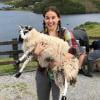











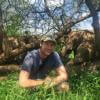


















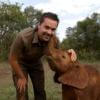















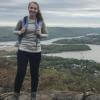



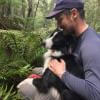





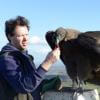
31 March 2023 2:15pm